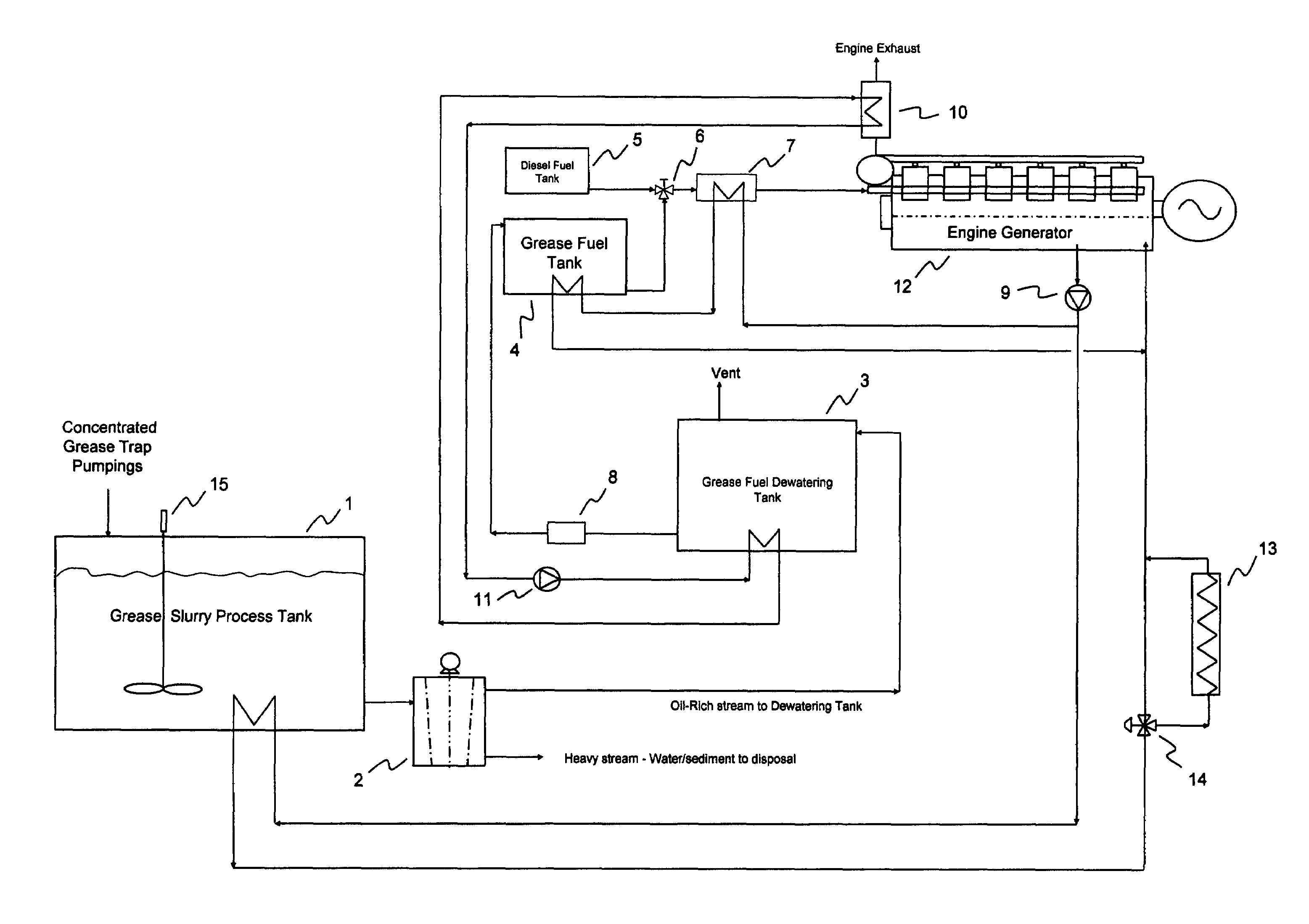Cogeneration system for grease separation and power production
a technology of cogeneration system and grease, applied in the direction of centrifugal force sediment separation, energy-based wastewater treatment, machines/engines, etc., can solve the problems of not providing an economically useful method of fogging, forming glycerin which is not generally a useful product, and providing a means for economically recovering grease, etc., to achieve substantial cost advantages, reduce viscosity, and simple treatmen
- Summary
- Abstract
- Description
- Claims
- Application Information
AI Technical Summary
Benefits of technology
Problems solved by technology
Method used
Image
Examples
Embodiment Construction
[0040]FIG. 1 is a process flow diagram of the preferred embodiment of the invention: a cogeneration system for a grease separation and power production. Concentrated grease trap pumpings are added to a grease slurry process tank (1) where heat is added to the tank contents from the engine jacket water heating loop until the temperature of the tank's contents is sufficient to liquefy all grease matter. The tank contents are kept homogeneous by a mixer (15). Tank contents are drawn from the tank and sent to a centrifuge (2) in which process flow is split into a heavy stream containing water and sedimentary particles and a light stream containing oil, oil / water emulsion and some residual water. The heavy stream is sent to a conventional wastewater treatment system for disposal. The light (oil-rich) stream is sent to a grease fuel dewatering tank (3) where it is heated to a temperature greater than the boiling point of water by a process heating loop circulating a high temperature heat ...
PUM
| Property | Measurement | Unit |
|---|---|---|
| electric power | aaaaa | aaaaa |
| heat exchange | aaaaa | aaaaa |
| temperature | aaaaa | aaaaa |
Abstract
Description
Claims
Application Information
 Login to View More
Login to View More - R&D
- Intellectual Property
- Life Sciences
- Materials
- Tech Scout
- Unparalleled Data Quality
- Higher Quality Content
- 60% Fewer Hallucinations
Browse by: Latest US Patents, China's latest patents, Technical Efficacy Thesaurus, Application Domain, Technology Topic, Popular Technical Reports.
© 2025 PatSnap. All rights reserved.Legal|Privacy policy|Modern Slavery Act Transparency Statement|Sitemap|About US| Contact US: help@patsnap.com


